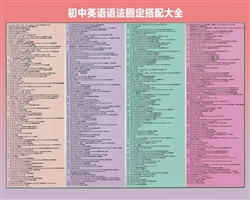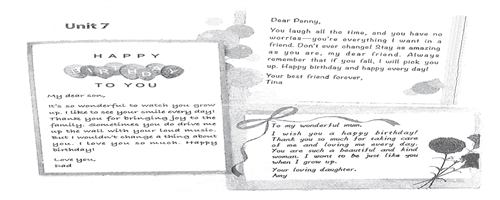Agriculture in the Eastern Han was more advanced than that of the Western Han, for iron farm tools and ox plough were popular, which was not only used in the central plain, but in the remote areas, like Gansu and Guangdong, as well.
东汉时期的农业生产较西汉更有发展,这和铁农具、耕牛更加广泛的使用有密切关系。不仅中原地区在使用牛耕,远至甘肃、广东等边远地区也已使用牛耕。
In most cases were two oxen drawing a plough, while occasionally one ox was used.
大多数是二牛抬杠,也有少数用一牛的。
In the earlier years of the Eastern Han, the government had attached importance to constructing water conservancy, in the reign of Emperor Ming, the noted specialist Wang Jing and Wang Wu organized the huge project to repair and harness the Yellow River and the Bianqu canal, in which hundreds of thousands of people were recruited.
东汉初年,官府已注意水利的兴修。明帝时,命民间水利专家王景和将作谒者王吴主持修治黄河和汴渠,并为这项工程而征调数十万人。
As a result, major breaks in the dykes or changes in the river course did not occur through the following 800 years.
黄河经过这次整治后, 大约有800多年的时间,未再发生决堤改道之事。
Many magistrates also paid attention to the local water conservancy.
有些郡守县令也重视本地区的水利兴修。
A lot of canals and ditches were rebuilt or dug, which contributed to the agricultural irrigation and water transport.
沟渠的修复或开凿,对于农田灌溉和交通运输都起了很大的作用。
Water power had been applied to the production activities in the early Eastern Han.
东汉初年,各地已在利用水力进行生产。
Besides the hydraulic water lifting devices, winnowers and water-powered mills were introduced, which raised efficiency by a wide margin.
除先进的汲水工具外,风车、水磨坊亦投人使用,极大地提高了生产效率。
Landlord manors came into being gradually in this period.
东汉时期地主庄园逐渐形成。
A landlord possessing a large-scale field was a manor landlord, while the manor county estate.
拥有大范围田地的地主可称为庄园地主,庄园就是田庄。
Manors included arable fields, mountain forests as well as rivers and pools, which were all in the possession of landlord.
庄园中不仅有耕地,其中的山林川泽也为地主所霸占。
Most of peasants on the manors were renders ,who engaged in agriculture or sideline activities under the instruction of landlords or his agents.
在地主庄园内,绝大多数农民是地主的佃户。佃农们在地主或其手下的指挥下,从事农业或副业生产。
The tenant farmers did not pay taxes to the state but only pay rental money to the landowner.
佃户不必向国家交税,但要向地主交租。
The farmsteads comprised not only the huge buildings for the living of the noble family but also farm buildings, mills and factories, which were surrounded by a wall that made the farmstead a small fortress.
庄园中不仅有供贵族家庭居住的高大建筑,还有农舍,磨坊和作坊。庄园主筑起围墙将整个庄园围起来,使得庄园有如城堡一般。
A few large estate owners also possessed a private army to defend their possessions.
少数的庄园主还拥有武装,用以保护自己的私产。
Generally speaking, a manor was a self-supporting economic unit in landlord economy.Salt-making, iron-smelting, bronze-casting, Lacquer wares and cloth-weaving were principle handicraft trades, most of which were privately running and superior in technology to that of the Western Han.
东汉时期的重要手工业有煮盐、冶铁、铸铜、漆器、纺织等,以私营为主,生产技术都较西汉进步。
The iron-smelting industry was kept freely.
冶铁业自由经营。
The state-owned one was engaged in the making of weapons, chariot and horse gears as well as other implements of production and living.
国家或官府经营的冶铁业以制造国家或官府需要的兵器、车马具及其他生产、生活用具为主。
To meet the demands of market, the private industry focused on the production of commodities, including farm tools, manual instruments and living appliances.
民营的冶铁业以生产商品为主,以供市场上的需要。产品以农具、手工工具及生活用具为最多。
Pottery objects found their way into the daily life of the common people as they were in the families of privileged aristocrats.
陶器不再是达官贵族家中的稀罕之物,也开始进人寻常百姓之家。
A great progress was made in the technique of smelting, like the invention of steel making at a low temperature.
东汉的冶炼技术有很大的进步,发明了低温炼钢法。
With the spread of this technology, steel was more popularized.
这一技术的发明和推广, 使钢的使用更加普遍。
Thus, iron and steel replaced bronze in making principal weapons like swords.
于是,铁兵器如刀、剑等最后完全代替了铜兵器。
With an enlarged planting of mulberry and hemp, sericulture, silk and flax fabrics weaving industries grew rapidly, and the weaving technology was also improved.
东汉的桑、麻种植的范围比西汉扩大,养蚕和丝织业、麻织业都有很大的发展,纺织技术也有进步。
Modern Shandong and Sichuan Provinces were the major producing area of silk.
主要丝织品产地在今山东、四川等省。
Business was booming, for the growth of agriculture and handicraft industry brought about more products in the Eastern Han Dynasty.
东汉时期,由于农业和手工业的发展,商品较多,因之商业也在发展。
In 40, Liu Xiu decreed to recast 5-zhu -coin with the abolition of the old currency, which got rid of the disordered currency and promoted the economic development.
建武十六年(公元40年),刘秀下令重铸五铢钱,废除了一切旧币,消除了货币混乱的局 面,促进了商业的发展。
Luoyang became the commercial center of the whole country. Other cities, such as Yangzhou (present Yangzhou City in Jiangsu Province), Jingzhou (present Shashi City in Hubei Province) ,and Yizhou (present Chengdu City in Sichuan Province) all witnessed prosperities in their handicraft industry and commerce. The urban population increased argely.
洛阳成了全国商业中心,南方的扬州(今江苏扬州一带)、荆州(今湖北沙市一带)、益州(今四川成都一带)的手工业商业也都很兴旺,城市人口大量增加。
During the reign of Emperor Zhang and Emperor He, silk from China was becoming familiar to people as far away as the Roman Empire. In return, China received variety of exotic goods.
章帝、和帝统治时期,中国的丝绸已为罗马人所熟知,而大量的异域商品也不断涌人。
The increasing transaction sped up the development of traffic.
陆路与海外贸易的发展,促进了交通事业的发展。
The thousand-mile-long plank road leading to economically important region of Ba Shu (modern Sichuan) was repaired many times, and many official roads were built, along which there were post stations to secure the safety of businessmen and travelers, provide accommodation and facilitate traffic.
自关中通向巴蜀的千里栈道多次得到整治,又修筑多条官道。这些找道、大道的沿途,多筑有亭障、邮驿,以保卫商旅,安顿食宿,便利交通。





 。
。